Copper Queen Library
Introduction
Text-to-speech Audio
Images
The first library of Bisbee circa 1885. It was across the street where the current one stands. This one burn done in the 1888 fire. Photo courtesty of the Bisbee Mining and Historical Museum
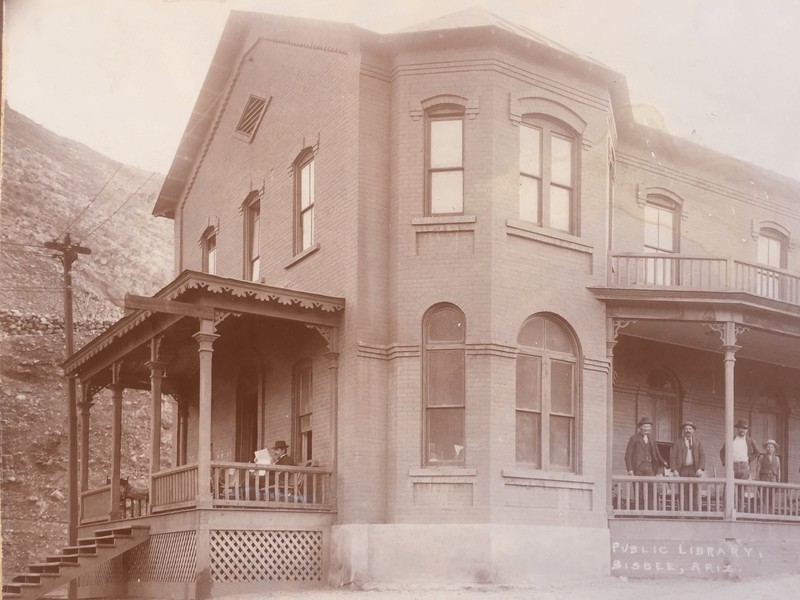
Bisbee's first librarian, Reverend J.G. Pritchard and his Cocker Spaniel. Photo courtesty of the Bisbee Mining and Historical Museum
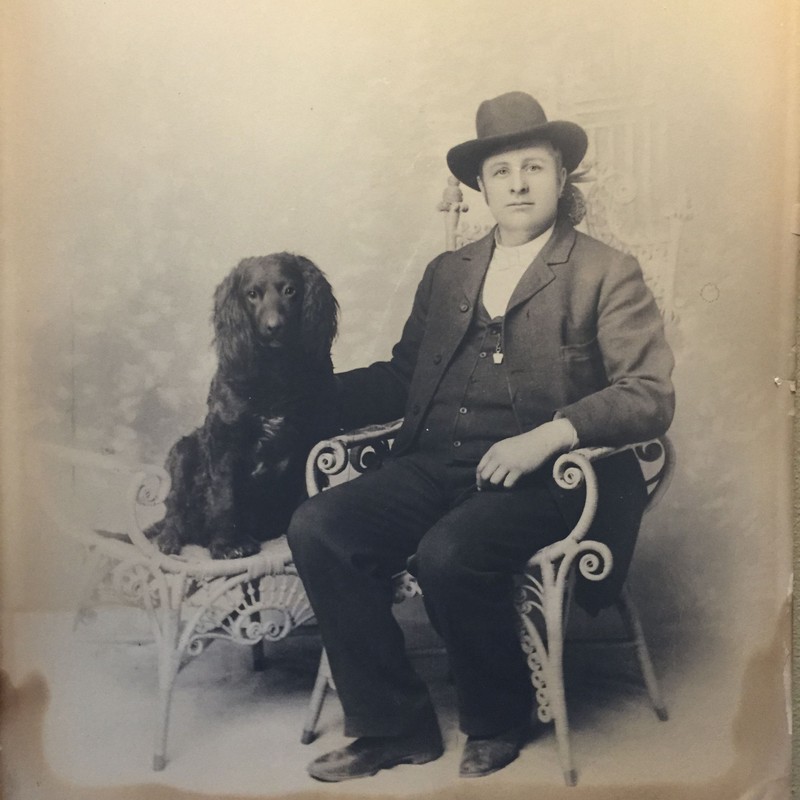
The current Copper Queen Library circa 190s-1920s. Photo courtesty of the Bisbee Mining and Historical Museum
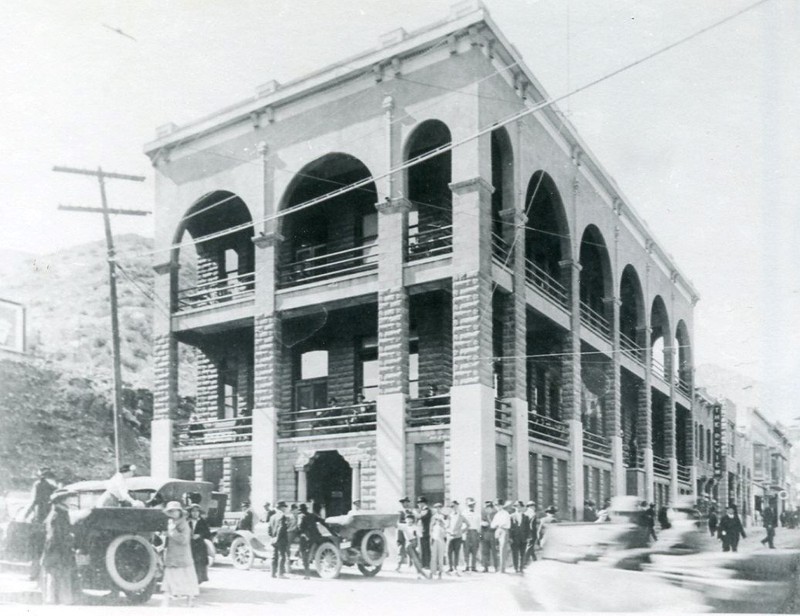
Inside a portion of the library today
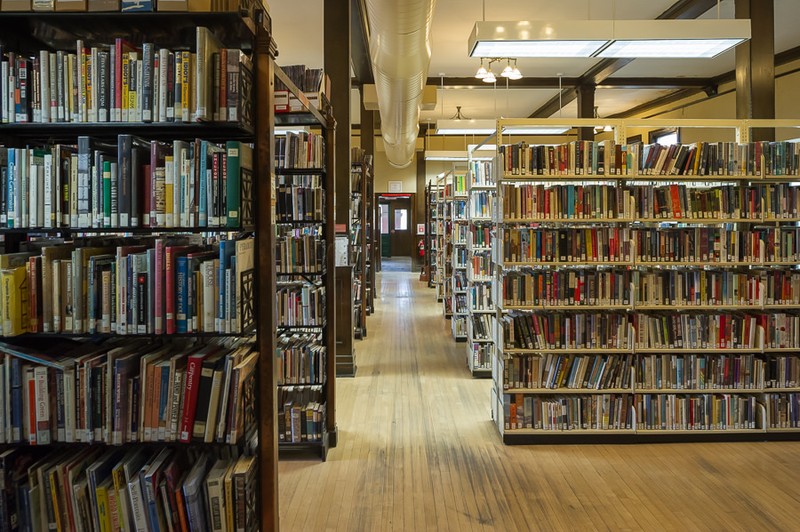
Patrons in the first floor of the Copper Queen Library circa 1910s. Photo courtesty of the Bisbee Mining and Historical Museum
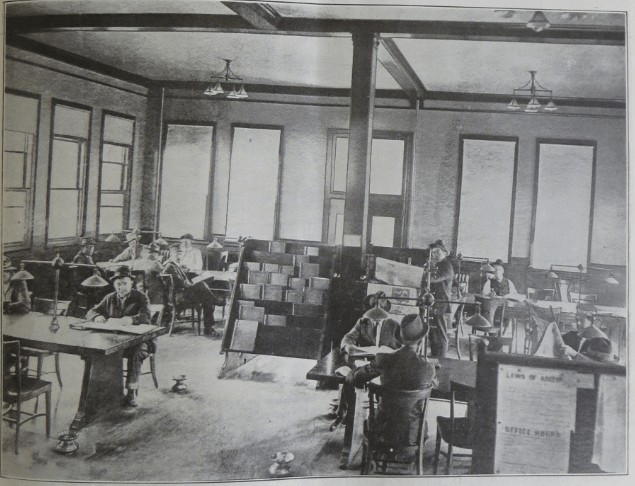
Delivery Desk in Reference Room. Photo courtesty of the Bisbee Mining and Historical Museum
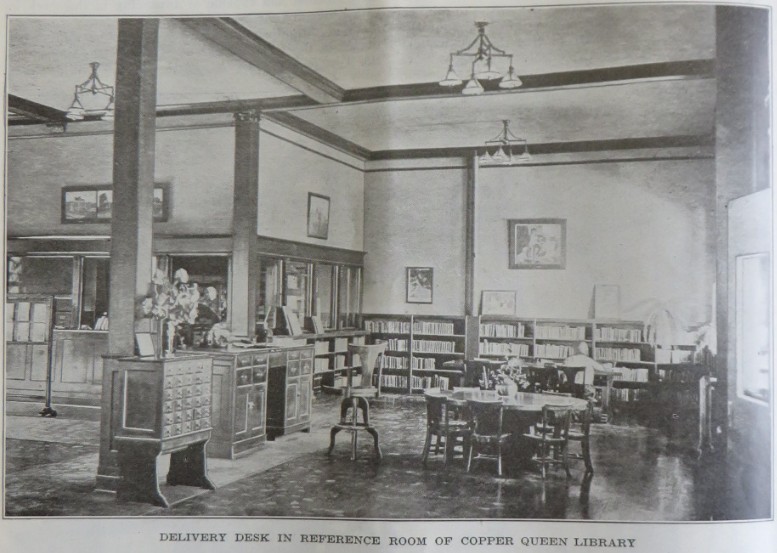
1930s-1940s photo of library
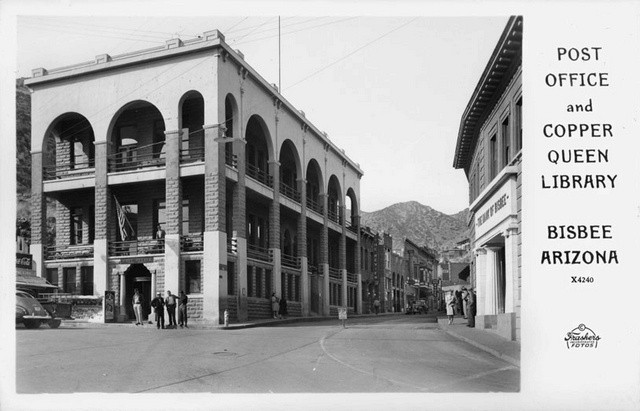
The Copper Queen Library as it appears today
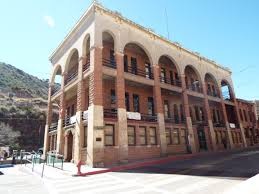
Backstory and Context
Text-to-speech Audio
Shortly after Mule Gulch was renamed Bisbee in 1880, principal members of the Copper Queen Mining Company arrived in town to find the swinging corpse of a fellow hanged the night before. They were so shocked by the sight, they decided immediately that the town needed more civilized diversions. Thus, in 1882, the first Copper Queen Library, with a collection of 400 volumes was established in the east end of the Copper Queen Mercantile Store.
By 1885, the Copper Queen Library had its own building. A white two-story wood-framed structure housed the library and the post office on the lower floor. The second floor was used for lodge meetings, church services, dances, and other social gatherings.
In 1887, Reverend J.G. Pritchard became the first paid librarian at the Copper Queen Library. Pritchard emigrated from Wales in 1848 when he was twenty and settled in Granville, NY. In 1873 he attended St. Francis College at Richmond, Quebec, and later enrolled in Morin College where he graduated from the theological department. Soon after his arrival in Bisbee, he was appointed postmaster and assumed charge of mail matters until an increase in the business warranted a separation of the library and postal interests. From the Portrait and Biographical Record of Arizona: 'Unfettered by narrow creed, and guided by naught save a broad and illuminating spirit of humanitarianism, the association of Mr. Pritchard with Arizona is inseparably interwoven with the best moral, intellectual and social development of the is great mining center of the west.'
In 1888, a disastrous fire swept Bisbee's Main Street and destroyed much of the town, leaving the library and all its books in ashes. However, 1892 saw the construction of a new brick building which was built in a similar style as the current Bisbee and Historical Museum. During this time, a rearrangement was made in the library to provide a game room for checkers.
In 1906, books were removed from the brick building and it was demolished, making way for the current (and bigger) building which opened its doors in March of 1907. The second floor served as a reading and game room, and the third floor served as the library.
By 1910 the library had 6,550 volumes. Approximately 23,924 books circulated that year, 13 books were lost and paid for, 13 books were lost and not paid for, and the average daily attendance was 261 people. In 1913, the library was closed twice because of spinal meningitis and small pox in the community.
In an annual report submitted by Librarian C.G. Vail made in 1918: 'The library has been active in war work during the year. About 450 books have been collected for soldiers, also a large number of magazines. The bulletin boards have been in use for war bulletins and a large number of food conservation booklets have been given out. The patrons of the smoking and game room have given up that room for the use of the Red Cross.'
In 1919, Librarian Vail reported on a new feature that was added -- the 5 Cent Shelf which 'enabled the library to buy almost immediately any popular book. Any time one of these books is borrowed the borrower must pay five cents until the book is paid for. This is common practice in all modern libraries and is proving popular in this library. We have added since spring over a hundred books without expense to the Company and it has given both pleasure and convenience to our patrons.'
In her annual report of 1932, Librarian Mrs. A.L. Sinclair stated: 'The inventory shows that there is considerable dead timber on the shelves, many books not having been in circulation for years; and many of the recent number in poor condition, pages missing, etc. Owing to the times, many books are mended and placed in circulation, which in normal times would be discarded. With a great number of unemployed seeking forgetfulness and pastime in reading, the demand on the library has been tremendous, as many as one hundred in the library, on two or three occasions at one time.'
In 1936, Librarian Sinclair wrote: 'The cooperation of Mayor Colford and officers in helping maintain order on the porches, and in the evenings when the main library is closed, has been of great help, as a disorderly crowd often gather on porches and outside stairs.'
After a hundred years of good, hard use, the Copper Queen Library underwent a major renovation project. Floors were refinished and an elevator was installed to give easy access to the second and third floors. The Library even made the news for its collection of bats that had made their home in the attic. The Friends of the Copper Queen Library turned this inconvenience into an asset by selling bat guano by the pound, called Biblio-Doo.
Today, the Copper Queen Library continues to thrive and serve its patrons, and still houses Reverend Pritchard's historic collection of books in its Rare Books Room."
Cite This Entry
Emett , Mike. "Copper Queen Library." Clio: Your Guide to History. December 6, 2016. Accessed April 27, 2025. https://theclio.com/tour/72/7

